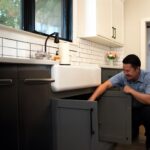Understanding what takes place after a mold inspection report is crucial for homeowners. Mold can lead to serious health problems and structural damage when left untreated. Hence, knowing the subsequent steps can help in efficiently addressing the issue at hand. This journey begins once you receive the inspection report, which will detail the presence, type, and extent of mold in your home. Taking timely and informed action based on this report is crucial to safeguard your family’s health and preserve the integrity of your property. Proper follow-through ensures that the problem is handled thoroughly, preventing further complications down the line.
Reviewing the Inspection Report
The first step following a mold inspection is to thoroughly review the inspection report. This document will typically contain information such as the areas affected, the species of mold identified, and the levels of spore counts. Familiarizing yourself with these details equips you to address the situation properly. It is often recommended to consult with the mold inspector or a mold remediation expert to ensure a clear understanding of the report. They can help clarify technical terms and recommend the best remediation approach.
Assessing the Severity of the Mold Problem
Once you understand the specifics provided in the report, evaluating the severity of the mold issue becomes paramount. Not all mold infestations require immediate action, as some might be manageable with standard cleaning methods. If you are in doubt about how best to test for mold, consult professionals. Extensive infestations, particularly of toxic mold species, necessitate professional intervention. During this assessment phase, consider factors such as affected square footage, the mold type, and the potential health effects when determining your course of action.
Choosing a Mold Remediation Strategy
With an educated assessment in hand, the next step is selecting a mold remediation strategy. Numerous options exist, ranging from DIY solutions to hiring professionals. DIY methods can be effective for minor mold outbreaks and include steps such as cleaning hard surfaces with detergent and water or using a mixture of vinegar and baking soda. For more significant issues, especially those regarding health risks, it’s wise to seek professional help. Professionals are equipped with the right tools and knowledge to safely eliminate mold, preventing contamination.
Scheduling the Mold Removal
After deciding on a remediation approach, scheduling the mold removal is the next critical step. If professionals are being employed, it’s best to arrange a consultation where they can provide an estimate and timeline for the remediation process. During this phase, clear communication is vital; ask questions regarding their techniques, safety measures, and timeline. For those opting for self-removal, creating a detailed plan that outlines the specific steps and necessary materials will lead to more effective execution. Remember, safety measures, including protective gear and proper ventilation, are vital in either scenario.
Understanding the Follow-Up Testing
Once the mold has been removed, follow-up testing should be conducted to ensure that the issue has been adequately addressed. This process often entails another inspection that could involve sampling the air or surfaces to confirm the absence of mold spores. It’s advisable to wait a few days after remediation before conducting this test for more accurate results. Knowing whether the problem has truly been resolved is critical for both safety and peace of mind.
Preventive Measures Moving Forward
The conclusion of the mold remediation process allows for a prime opportunity to implement protective measures against future mold growth. This might include improving ventilation in damp areas, fixing leaks promptly, or using dehumidifiers to reduce moisture levels. Regular maintenance and inspection can help in early detection. Proactive homeowners often find that consistent monitoring and maintenance reduce the likelihood of mold reoccurrence. Making this a priority can safeguard your property and your family’s health.
Maintaining a Mold-Free Home After Remediation
After completing the remediation and confirming the mold is gone, the focus should shift to long-term prevention. Consistently managing moisture levels and ensuring proper airflow in your home are key to stopping mold from returning. Regularly inspect areas prone to dampness, such as basements, bathrooms, and crawl spaces. Address any water leaks or spills immediately to prevent creating a favorable environment for mold growth. Staying vigilant with these habits helps protect your home’s structure and your family’s health well into the future.
Following a mold inspection report requires careful consideration and decisive action. Each step, from understanding the findings to choosing the most appropriate remediation method, plays a crucial role in effectively addressing the issue. Taking prompt and informed measures prevents future growth, protecting both your property and health. By adopting this systematic approach, you ensure a safer, healthier living environment for you and your family, reducing the risk of mold-related health problems and structural damage over time.






